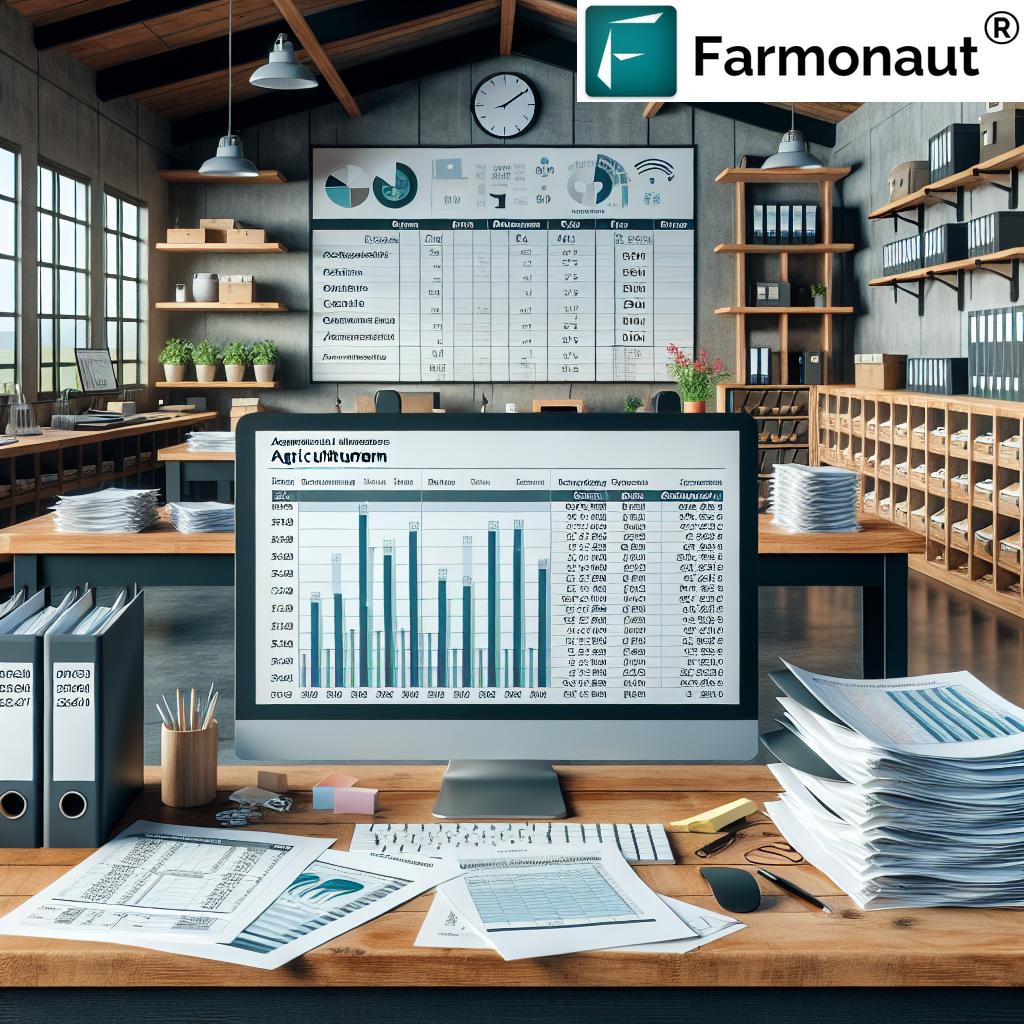Artichoke Pests, Bok Choy Pests: 7 Eco Fixes 2025
“In 2025, eco-friendly pest control can reduce artichoke and bok choy pest damage by up to 60%.”
Introduction: Sustainable Pest Management for Artichoke and Bok Choy in 2025
As global agricultural demands intensify in 2025, the quest for effective, eco-friendly pest control in specialty crops like artichokes (Cynara scolymus) and bok choy (Brassica rapa subsp. chinensis) takes center stage in modern agriculture. Ensuring food security and maximizing yields remains a cornerstone of specialty vegetable farming, but artichoke pests and bok choy pests continue to challenge producers—threatening crop quality and productivity.
In this comprehensive guide, we explore the major pests affecting artichokes and bok choy, including larvae, aphids, beetles, cutworms, moths, and more. We highlight the latest sustainable IPM approaches, eco-fixes, and technology-driven solutions for 2025 and beyond—focusing on sustainability, environmental stewardship, and practical steps for reducing damage while promoting plant health and profitability.
Whether you’re a grower, agronomist, or industry stakeholder, understanding integrated pest management for artichoke pests and bok choy pests is essential in 2025!
Artichoke Pests: Major Challenges and 2025 Eco Solutions
Why Artichoke Pests Remain a Challenge
Artichokes are appreciated worldwide, renowned for their edible flower buds, nutritional benefits, and market potential. However, artichoke pests pose significant threats that require modern and sustainable management approaches:
- Multiple pest species attack different plant stages—from seedlings to mature buds.
- Climate fluctuations and intensifying agriculture in 2025 are creating new pest challenges and increasing pressure on crops.
- Traditional chemical pest control can harm beneficial insects, pollinators, and the broader environment, making sustainable strategies more important than ever.
Primary Artichoke Pests Affecting Yields
Here’s a closer look at the major artichoke pests of 2025:
-
Artichoke Plume Moth (Platyptilia carduidactyla):
The most destructive and persistent insect pest in artichoke cultivation. The larvae burrow into buds and stems, causing damage that leads to bud drop, secondary infections, and direct yield reduction.- Especially prevalent in Mediterranean regions and areas with mild winters.
-
Aphids (Myzus persicae & Others):
Aphid species (mainly green peach aphid) sap vital nutrients from artichokes, transmit viral diseases, and introduce honeydew, encouraging fungal secondary infections and attracting sooty mold. -
Cutworms:
These larvae feed at the base of young artichoke plants, particularly damaging seedlings and delaying establishment.
?
These pests can compromise quality and reduce productivity, underscoring the need for modern IPM in 2025.
Modern IPM Approaches for Artichoke Pest Control
Integrated Pest Management (IPM) remains the preferred strategy for effective and sustainable artichoke pest control in 2025. Key principles and interventions include:
-
Regular Monitoring & Early Detection:
Frequent scouting helps identify infestations early, enabling timely, targeted interventions against plume moth larvae and aphid outbreaks. -
Biological Controls:
Leverage the power of natural enemies for pest suppression:- Parasitoids such as Trichogramma wasps target plume moth eggs and disrupt the life cycle.
- Lady beetles (Coccinellidae) and lacewings (Chrysopidae) are voracious aphid predators.
-
Cultural Practices:
- Crop rotation breaks pest life cycles and reduces population carry-over.
- Removal of plant residues after harvest eliminates overwintering sites for larvae and eggs.
- Soil health improvement fosters plant vigor and resilience.
-
Selective, Eco-Friendly Pesticides:
When required, apply botanical insecticides (like neem oil) or insect growth regulators that minimize harm to non-targets and the environment. -
Precision Agriculture Technologies:
Adoption of pheromone traps, drone surveillance, and AI-driven pest analytics optimizes interventions, ensuring action only where necessary—thus, reducing overall chemical use and preserving beneficial insects.
Bok Choy Pests: Key Threats and Sustainable Strategies
Top Bok Choy Pests Affecting Crop Health
Bok choy is increasingly popular for its nutritional benefits and versatility, but is also vulnerable to a range of pests, including:
-
Aphids (Brevicoryne brassicae, Myzus persicae):
Sap-sucking insects that distort leaves, cause growth stunting, and transmit viral diseases. -
Flea Beetles (Phyllotreta spp.):
Create telltale “shot holes” on bok choy leaves, affecting photosynthesis and marketability. -
Cabbage Loopers and Diamondback Moths (Plutella xylostella):
Caterpillars that rapidly defoliate plants if unchecked. -
Slugs and Snails:
Especially problematic in humid climates; feed on tender leaves, causing cosmetic and yield loss.
These pests can compromise bok choy quality, increase disease pressure, and reduce commercial value. Sustainable management is a key imperative.
“Integrated Pest Management (IPM) strategies boost bok choy yields by 30% while minimizing chemical pesticide use.”
Integrated Bok Choy Pest Management in 2025
The focus for bok choy pest control in 2025 is on resilient practices that enhance sustainability and long-term yield stability:
-
Use of Resistant Varieties:
Advances in breeding have produced bok choy cultivars with natural resistance to aphids and flea beetles, reducing crop losses and reliance on pesticides. -
Biological Control Agents:
- Entomopathogenic fungi and nematodes help manage soil-dwelling pests (slugs, larvae).
- Predatory insects (like lady beetles, hoverflies, parasitoid wasps) regulate aphid and caterpillar populations.
-
Cultural Controls:
- Intercropping with pest-repellent plants (e.g., marigolds, alliums) interrupts pest life cycles and attracts natural enemies.
- Row covers and netting provide a physical barrier to flea beetles and moths.
- Maintaining soil health and fertility supports plant vigor and resistance.
-
Eco-Friendly Pesticide Application:
Biopesticides (derived from neem, spinosad, or Bacillus thuringiensis (Bt)) are used strategically and sparingly when pest thresholds demand intervention.
Effective management in 2025 means using a combination of preventive, cultural, and biological strategies to minimize pesticide use, protecting beneficial organisms, and safeguarding environmental health.
2025 Comparison Table: Eco-Friendly Pest Solutions
Comparing sustainable solutions side-by-side helps growers and agronomists select the right strategy for managing artichoke pests and bok choy pests effectively in 2025:
| Pest Name | Crop Affected | Estimated Yield Loss (%) | Eco-Friendly Solution | Application Method | Estimated Efficacy Rate (%) | Environmental Impact | Estimated Cost ($/acre) |
|---|---|---|---|---|---|---|---|
| Artichoke Plume Moth (Platyptilia carduidactyla) | Artichoke | 30 | Parasitoids (Trichogramma wasps) | Release wasps near buds during egg-laying season | 70 | Low | 35 |
| Aphids (Myzus persicae, Green Peach Aphid, Brevicoryne brassicae) | Artichoke / Bok Choy | 15 | Lady Beetles / Neem Oil | Predator release or foliar spray (neem) | 65 | Low | 18 |
| Cutworms | Artichoke / Bok Choy | 12 | Soil Nematodes | Soil drench/irrigation with beneficial nematodes | 68 | Low | 20 |
| Flea Beetles (Phyllotreta spp.) | Bok Choy | 20 | Row Covers / Companion Planting | Physical barrier and intercropping with repellents | 75 | Low | 29 |
| Cabbage Loopers / Diamondback Moth (Plutella xylostella) | Bok Choy | 18 | Bacillus thuringiensis (Bt) | Foliar spray at larval stage | 80 | Low | 15 |
| Slugs and Snails | Bok Choy | 10 | Biological Pellets / Beer Traps | Place pellets/traps in field margins | 60 | Low | 13 |
| Leafminers | Bok Choy / Artichoke | 8 | Sticky Traps / Beneficial Wasps | Hang yellow sticky cards, wasp release | 60 | Low | 12 |
| Whiteflies | Artichoke / Bok Choy | 7 | Neem Oil / Encarsia formosa | Spray or natural enemy release | 65 | Low | 17 |
7 Effective Eco-Friendly Pest Fixes for Artichoke and Bok Choy Pests
Let’s summarize the most impactful eco-friendly solutions for pest management in artichokes and bok choy in 2025—rooted in integrated pest management principles:
-
Biological Control Agents
- Trichogramma wasps target plume moth eggs in artichokes; lady beetles & lacewings manage aphids in both crops.
- Entomopathogenic nematodes control soil-dwelling pests including cutworms, loopers, and slugs.
-
Resistant Varieties
- Breed and select bok choy lines with resistance to flea beetles and aphids; use certified, clean planting material for artichokes.
-
Cultural and Crop Management Practices
- Crop rotation and residue management minimize overwintering pests.
- Soil health improvement boosts natural plant resilience. Farmonaut’s Carbon Footprinting tool can help monitor sustainable practices in the field and reduce environmental impact.
-
Physical Barriers and Traps
- Row covers, netting, sticky traps, and pheromone lures prevent pest access or capture adults, especially effective for flea beetles and leafminers.
-
Targeted Application of Biopesticides
- Use botanical insecticides (e.g., neem, spinosad) and Bacillus thuringiensis (Bt) sprays when pest populations reach threshold levels to minimize damage and preserve beneficial insect communities.
-
Integrated Digital Monitoring
- Incorporate satellite and drone surveillance for crop health assessment and pest hotspot detection. For example, Farmonaut’s Large Scale Farm Management Platform enables real-time monitoring, ensuring rapid response to emerging infestations and optimizing resource allocation.
-
Blockchain-based Pest Monitoring and Traceability
- Farmonaut’s Traceability Platform secures data regarding crop management practices and pest interventions, assuring buyers of the sustainability of the product supply chain and building consumer trust in eco-friendly food.
Precision Monitoring & Digital Technologies in IPM
The integration of precision technology is revolutionizing sustainable pest management for artichoke and bok choy pests in 2025:
How Digital Tools Enhance IPM Practices
-
Satellite Imagery & Remote Sensing:
- Empowers field managers with up-to-date information on crop vigor, pest hotspots, and soil health indicators.
- Farmonaut Fleet Management Solutions assist in optimizing the deployment of resources and interventions exactly where needed, reducing input waste and environmental impact.
-
AI-Based Pest Identification:
Mobile and web applications, such as those powered by Farmonaut’s Jeevn AI Advisory System, offer instant, field-level insect identification and personalized pest management advice—empowering faster, smarter decisions for both large and small-scale producers. -
Predictive Analytics:
Early warning systems for pest and disease outbreaks, driven by weather and crop sensor data, foster timelier interventions and improved success rates with fewer pesticide applications. -
Blockchain Traceability & Compliance:
Documentation of pest management practices, from scouting to interventions, ensures transparency for food safety certification schemes and regulatory compliance, providing marketing advantages and consumer confidence.
Technology not only improves on-farm efficiency, but also makes eco-friendly solutions both accessible and economically viable on a global scale.
Farmonaut’s Role in Sustainable Pest Management
At Farmonaut, we are committed to advancing the future of agriculture through affordable, scalable, and sustainable digital solutions. Our unique platform helps growers, agri-businesses, and governments monitor crop health, identify pest hotspots, and manage fields remotely—making real-time, data-driven IPM strategies accessible for artichoke and bok choy producers globally.
- Our satellite-driven crop monitoring services utilize multispectral imaging (including NDVI for vegetation health), supporting identification of stress regions caused by pests or nutrient deficiencies.
- Jeevn AI-based advisory system analyzes crop, weather, and pest data, delivering personalized recommendations for intervention timing, pest identification, and eco-friendly solution application.
- Blockchain-based traceability (see Farmonaut Product Traceability) ensures every pest control and farm management step is transparent, reinforcing food safety and sustainability certifications.
- Fleet and resource management tools help optimize the deployment of interventions, using real-time geospatial data to direct scouting, biological agent releases, and targeted sprays precisely where needed.
- Environmental impact and carbon footprint monitoring aid in verifying sustainable practices are followed, essential for both regulatory compliance and carbon market participation (learn more at Farmonaut Carbon Footprinting).
- Financial verification for crop loans and insurance (Farmonaut Crop Loan & Insurance Verification) incentivizes the adoption of resilient, certified IPM practices by simplifying insurance claims and loan approval processes.
The digital transformation of agriculture means sustainable pest management is no longer a distant goal, but an achievable reality for all producers of artichokes and bok choy worldwide.
FAQ: Artichoke and Bok Choy Pest Management 2025
- What are the major artichoke pests in 2025?
-
The most significant artichoke pests remain the artichoke plume moth (Platyptilia carduidactyla), aphids (Myzus persicae), and cutworms. Advances in IPM, digital monitoring, and biological control are making it easier to manage them sustainably.
- Which pests most threaten bok choy crops?
-
Key bok choy pests in 2025 include aphids, flea beetles (Phyllotreta spp.), caterpillar larvae (cabbage looper and diamondback moth), whiteflies, and slugs/snails. They can affect both yields and quality if unmanaged.
- How does integrated pest management (IPM) reduce pesticide use?
-
IPM combines regular pest scouting, biological controls, targeted eco-friendly pesticide applications, and cultural practices. This holistic approach reduces reliance on chemicals, lowers environmental impact, and supports beneficial organisms.
- How can technology help in artichoke and bok choy pest management?
-
Technology—including satellite data, AI-driven pest identification, remote sensing, and digital traceability—enables faster, more precise interventions, helps monitor field health, predicts pest outbreaks, and supports regulatory and market compliance for eco-friendly production.
- Are biopesticides safe for beneficial insects?
-
Most biopesticides (like neem oil and Bacillus thuringiensis) are highly selective and have low toxicity for beneficial fauna, making them suitable for sustainable pest management and IPM in 2025.
- How does Farmonaut enable better pest management?
-
We provide real-time field monitoring, pest hotspot detection, resource management, and blockchain-based traceability—empowering farmers and enterprises to adopt cost-effective, sustainable practices for both artichoke and bok choy pest management.
Farmonaut Subscriptions & App Links
Get started with digital, satellite-based pest management on your farm!
Developers and agritech solution providers:
Farmonaut API Access |
API Developer Docs
Conclusion: Eco-Friendly Strategies Empower Artichoke and Bok Choy Pest Management for 2025
Efficiently managing artichoke pests and bok choy pests in 2025 and beyond requires a holistic, innovation-driven approach—combining biological controls, sustainable cultural practices, cutting-edge digital monitoring, and blockchain-backed transparency in crop management.
As modern agriculture evolves, IPM remains the cornerstone strategy for reducing pest damage, maximizing yields, ensuring food security, and preserving ecosystem health. Adoption of satellite technology and AI-powered advisory systems empowers every grower to implement targeted, cost-effective, and sustainable interventions, transforming challenges into opportunities for resilient, profitable production in a more environmentally responsible food system.
Together, by integrating eco-friendly solutions and technology, we can ensure the future of artichoke and bok choy farming is productive, profitable, and sustainable for generations to come.












